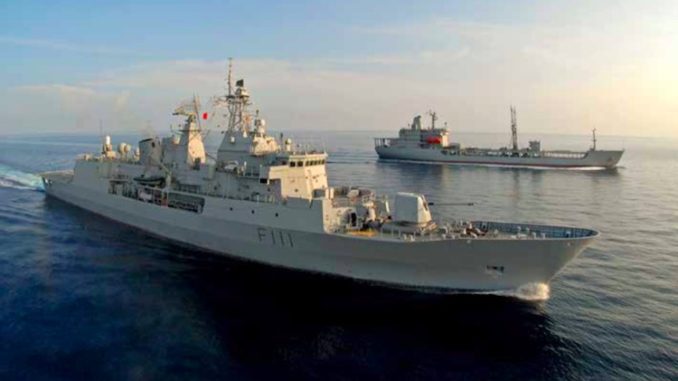
Acheiving a supply chain that gets the right equipment at the right time and in the right condition to the right person on the front line is harder than it looks, writes John Campbell MNZM, CEO of Auckland-based Ra Moana Consulting.
To say that I have learnt a lot over the last twelve months is an understatement. The most astounding thing is that I have learnt more about logistics out of uniform than I ever did while wearing one!
I was an avid believer in Admiral E.J. King’s quote “I don’t know what the hell this ‘logistics’ is that Marshall is always talking about, but I want some of it.” And as an operator why not – I had all those professional logisticians to worry about supply lines and making sure my ship got off the wharf.
So, as an ex operator, I apologise to the logisticians and engineers for my naivety (yes Engineers – you are actually logisticians!).
As an operator I glibly passed off all those other logistic functions to others, especially around through life support, maintenance, repair and overhaul (and engineering) (MRO&E), configuration control, supply chain assurity and inventory management.
We risk concentrating on the very big projects (I know they have a lot of risk and political focus) and not placing the same emphasis into the support that is required to manage the non-platform equipment across the Defence Force. Without this we put at risk that initial investment.
As we shift to equipment becoming more complex and more costly, we also need to shift our thinking on what we purchase, why and quantities. We can no longer afford to have large pools of equipment sitting on the shelf, in a garage or in a warehouse waiting because of an inefficient or unreliable supply chain.
The NZDF is taking steps to move to an ‘Equip the Force’ model. This will save capital spend on assets but will only work when they get the logistics organisation set up to succeed and to maximise the benefit from increased availability through good reliability driven by a mature and trusted MRO&E organisation behind the force.
This will then give assurance to commanders that their equipment is fit for purpose and has the reliability to operate in the environment being demanded of it.
It will also give the organisation greater fidelity in failure rates, reliability and availability of equipment, allowing for greater decision making around replacement capabilities into the future. This means the right data needs to be available and then used to maximum advantage to drive decision making.
The NZDF operates with good strategic MRO partners at the depot level but has too much placed on this support without looking at what is required at the front line, be it uniformed personnel, equipment, and knowledge to be a truly deployable force.
The NZDF is working hard to move from the 1980s ‘Equip the Unit’ mentality to a modern ‘Equip the Force’ resource with a trusted supply chain delivering the right equipment at the right time to the right person and in the right condition for the mission they are on.
It sounds easy – it is not. It is a multitude of systems that all intersect – the sum of which will deliver far greater benefits than the individual parts.
For those operators that have not seen the light then I suggest you spend time in your logistics organisation and understand what really does go on to get that ship off the wharf, that aircraft in the air or that company or battalion out the door – and to keep them there!
You cannot make bold statements without quoting Sun Tzu – “The line between disorder and order lies in logistics”. Without order we cannot deliver the effect we are there to deliver.





